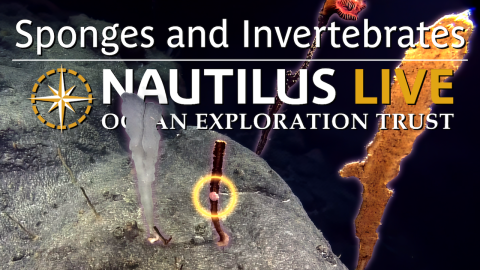Black Smokers of Hafa Adai Vent Field
During the NA171 expedition, ROV Hercules explored the Hafa Adai Vent Field in the Mariana back-arc: the first visit to this extraordinary site since its discovery in 2016. Co-Lead Scientist Bill Chadwick explains how different the site looks from the last time he saw it, a visual example of the region’s ongoing hydrothermal and volcanic activity. Hot vent fluids from these chimneys include metals leeched from seafloor rocks, giving it the distinctive black color and earning the name “black smokers.”
This extreme habitat with temperatures that have measured up to 350°C can surprisingly support a variety of species, such as squat lobsters (Munidopsis sp.), anemones (Marianactis bythios), and shrimp (Rimicaris sp.). Some of these animals (including polychaete worms such as Paralvinella hessleri) have evolved specifically to survive in these chemosynthetic environments. Animals like Alviniconcha hessleri snails have symbionts that allow them to create their own food using the chemicals released at these vents.
The Mattingan: Mariana Arc Volcanic Exploration (NA171) expedition is exploring deep-sea areas identified by the local management and science community, including sites with signatures of active volcanism, abyssal plain habitats, and areas in and around the Monument where new data can support resource management priorities. This expedition is supported by NOAA Ocean Exploration, the Bureau of Ocean Energy Management, and the US Geological Survey via the Ocean Exploration Cooperative Institute.

Mattingan: Mariana Arc Volcanic Exploration
E/V Nautilus will begin the 2025 season exploring the ocean of the Mariana Islands- one of the most tectonically and volcanically dynamic locations on the planet. This area is home to one of the most active arc volcanic systems on Earth with more than 60 submarine volcanoes, and a back-arc spreading center where new seafloor is created.



